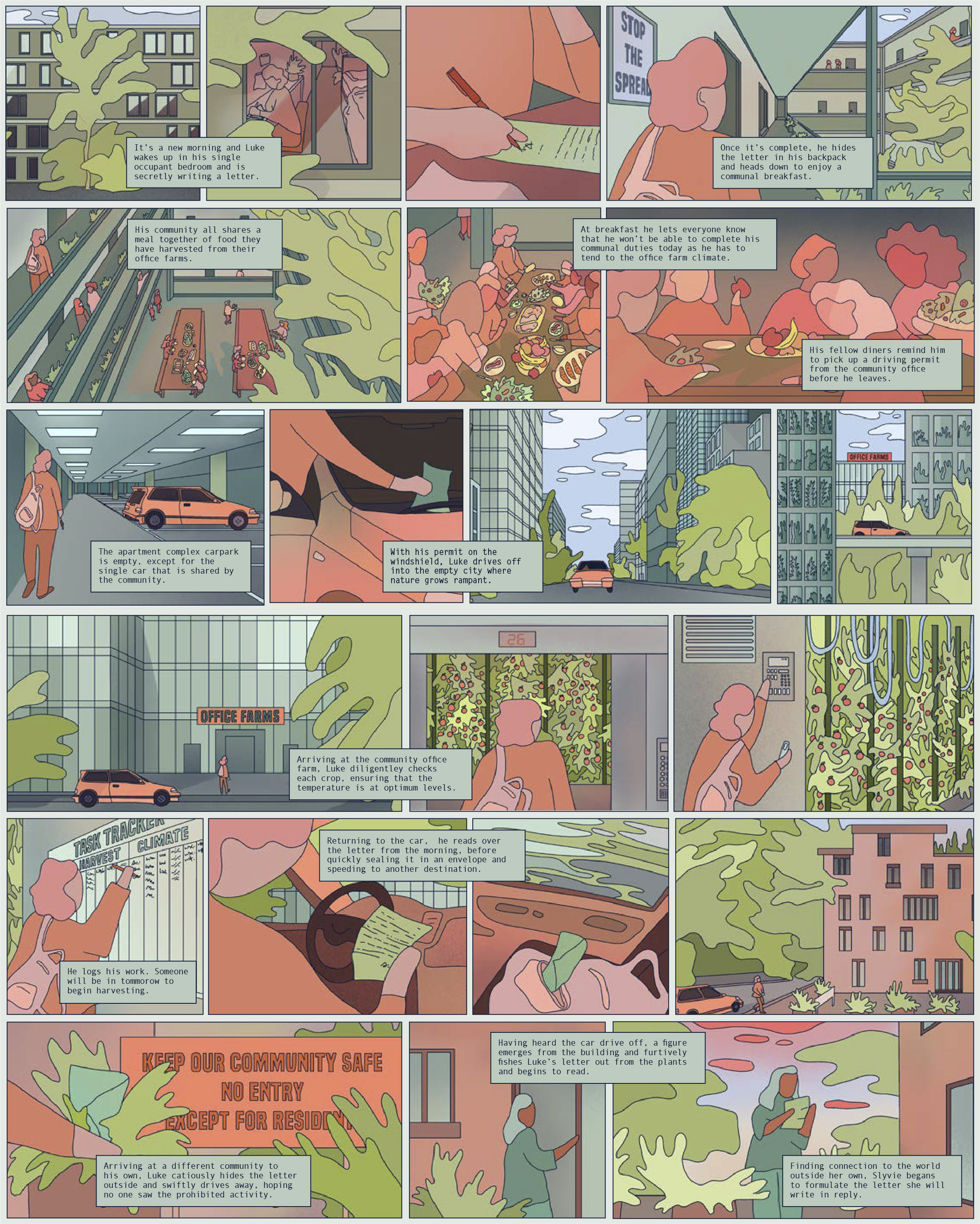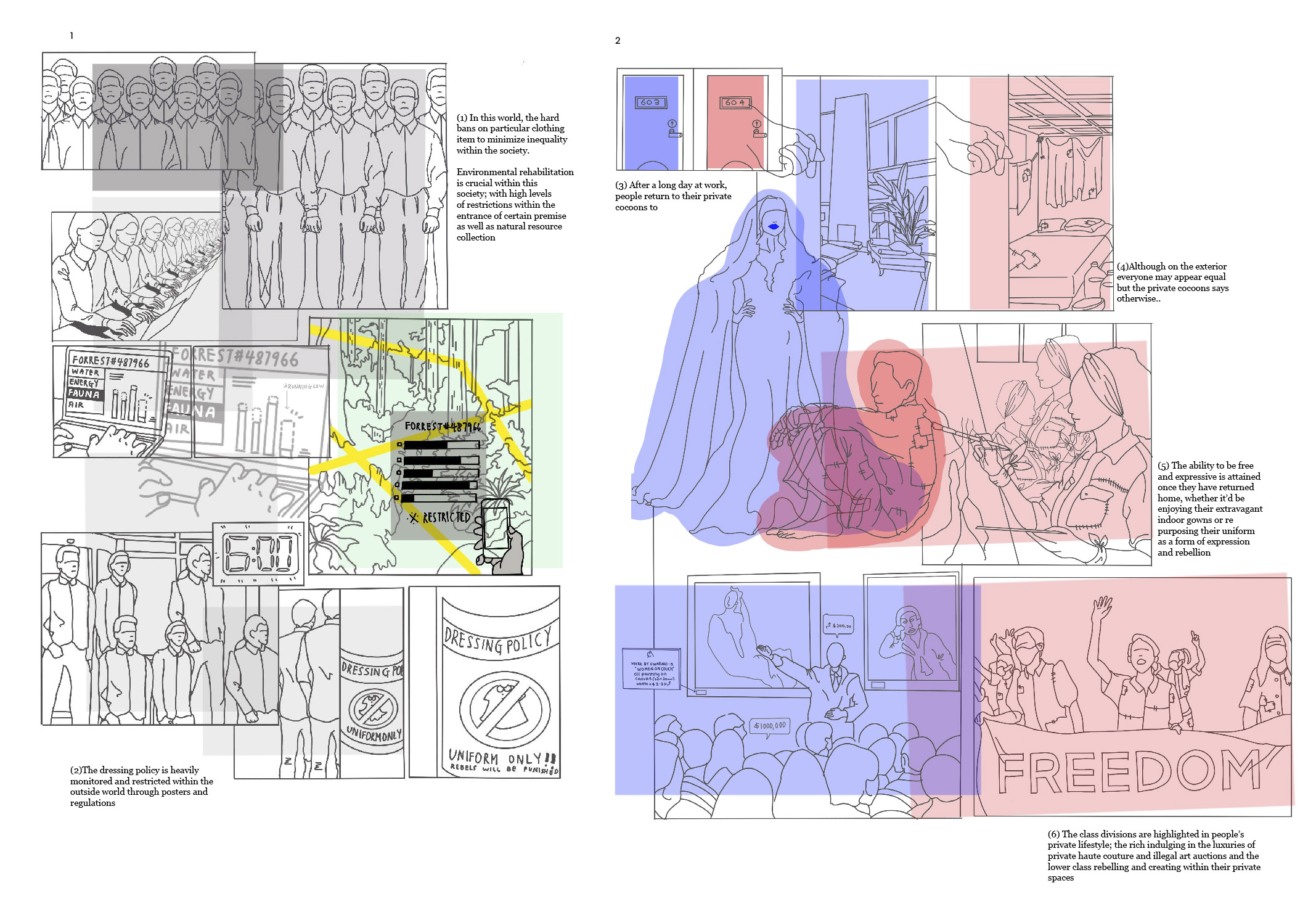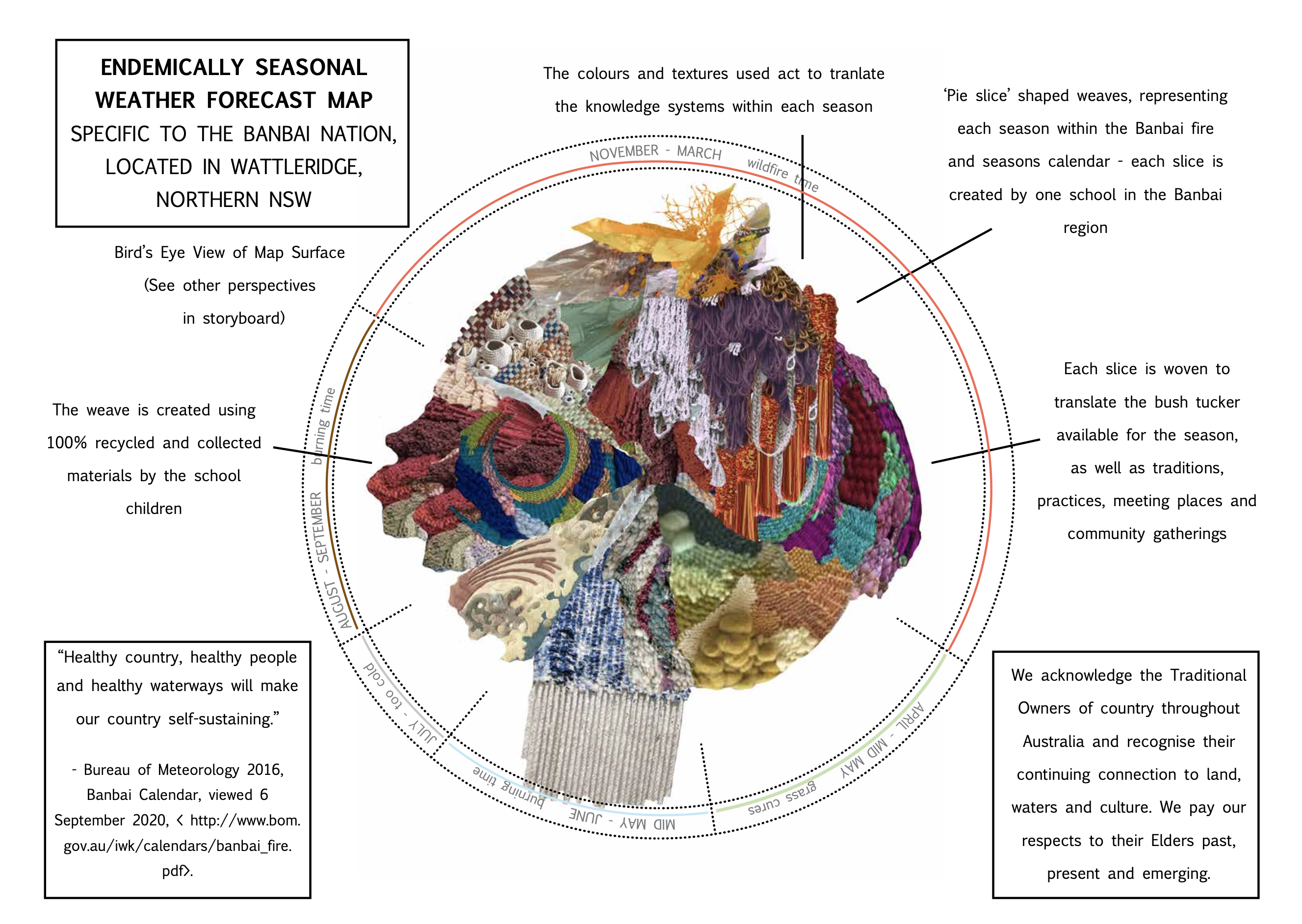"Present visions of the future display a startling, unselfconscious lack of originality."
(Edgerton 2008)
This report contains highlights from a design studio focused on design futuring. The researchers who contributed to the report were given the brief of making tangible different worlds at a significant distance from our present reality. The specific artefacts the researchers were tasked with creating included: 12-24 panel storyboards and concept sketches for ‘diegetic prototypes’, otherwise known as, ‘an object or service from another world that offers some insight into the (speculative) place and time whence it came.’
As an entry point into more complexly conceived storyworlds, the researchers were given three different examples of things to re-imagine: screens, cars and the weather report. The researchers were deliberately steered away from the more common speculations and predictions associated with these examples: augmented reality and autonomous vehicles being prime culprits.The vision for the research initiative began with the four propositions listed below. The rest of this report elaborates the broader theoretical underpinnings of these propositions and reflects on their nuances and limitations.
01
Futuring, design fiction and scenario planning are valuable practices for designers to learn for a range of reasons.
02
However, these approaches are often practiced in manner that is overly innovation-centric, reactively anti-innovation or smugly ironic—even when claiming naivety rather than irony.
03
We aim to learn from existing industry and academic futuring practices and augment these with theoretical inspiration from David Edgerton’s focus on a use-centric understanding of technological change, which gives due place to: the slow exit of older technologies, the variety and subtly of use in ordinary contexts, and that doesn’t suggest an asymmetry of importance between something like a cup or a shoe, on the one hand, and the autonomous vehicle on the other hand.
04
Lastly, our approach to worldbuilding will centre on what Caracciolo calls ‘the logic of unfolding’ (2019) which is used to describe the relationship between story and world. What Caracciolo means by this phrase is that storyworlds emerge through the interaction of audience or reader, plot and world. Each unfolds from the other in what he describes as “distinctive rhythm based on patterned interactions” (2019, 155).
Continue ︎︎︎
[01] Cooperative Community Living without a Covid-19 Vaccine

[02] Future Cultures: use-based technology as a system to reclaim control and agency

[03] Endemically seasonal weather forecasts as textillic, mapped surfaces
